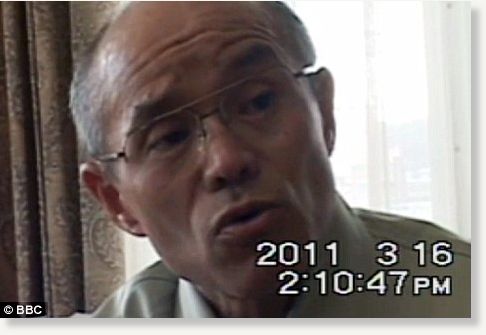
Minamisoma lies just 12 miles from the nuclear plant in crisis and villagers have been ordered to remain in their homes as their community lies on the edge of the state-ordered evacuation zone.
But as tonnes of water were dumped on the plant as the government attempted to prevent overheating, the mayor of Minamisoma has accused the authorities of ignoring his 'isolated' people's plight.
'They are leaving us to die,' Katsunobu Sakarai told the BBC in a video interview.
'We weren't told when the first reactor exploded - we only heard about it on the TV. The government doesn't tell us anything.'
Staff at the small town's hospital have remained with their patients although Minamisoma would be at a high risk of contamination should the plant at Fukushima enter meltdown.
'We're not really supposed to be here but this is our job,' said Dr Yukio Kanazawa.
'I really resent the nuclear plant.'
Supplies are said to be running low in the town, which has a population of around 1,700 and with fears of an imminent nuclear crisis, residents are receiving little help from relief teams.
Complaints from the abandoned people of Minamisoma come as the Japanese authorities resorted to dumping water on over-heating reactors at the Fukushima nuclear plant from helicopters in a desperate last-ditch attempt to stop a catastrophic meltdown.
Experts have warned that they have 48 hours to avoid another Chernobyl.
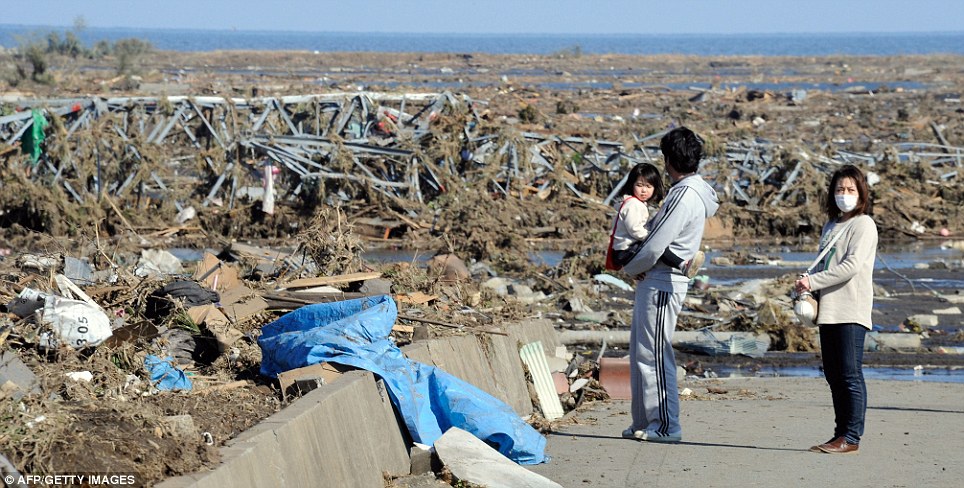

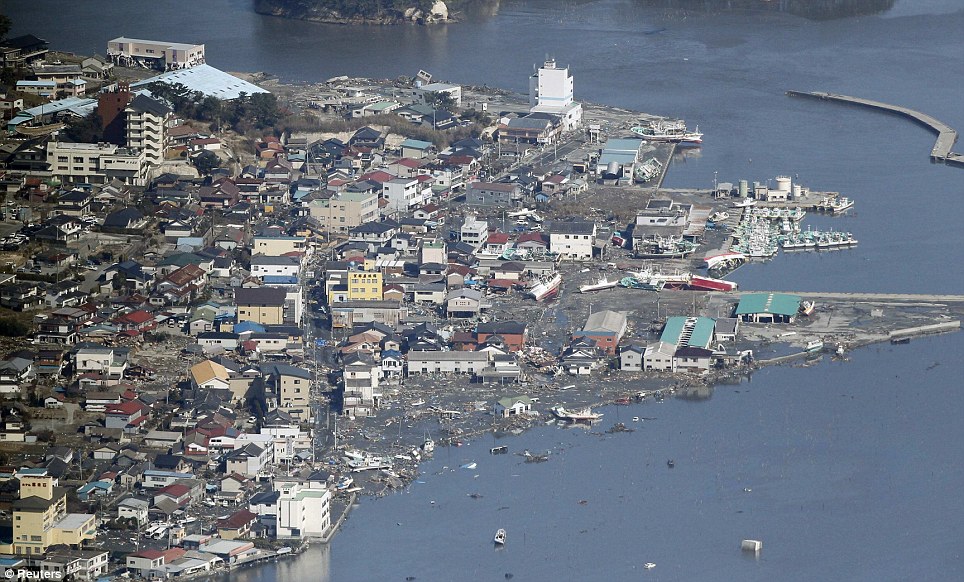
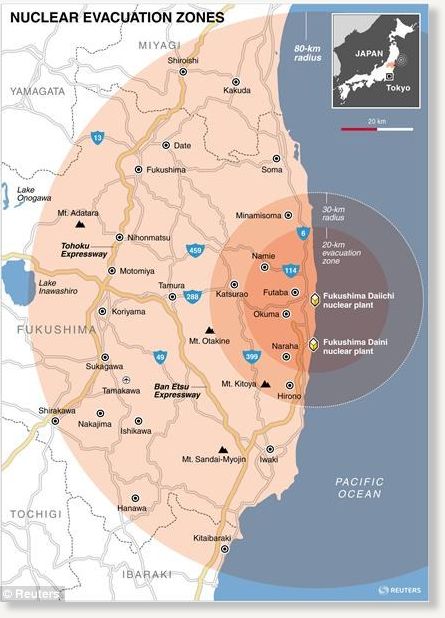
A further 10,000 are missing in the coastal town of Minamisanriku in Miyagi prefecture
The British government has now echoed the U.S. state department's call for nationals in Tokyo and to the north of the capital to leave the area and remain at least 80kn away from Fukushima.
While the residents of Minamisoma fear they may be left helpless in the event of a nuclear disaster, the impact of the earthquake and tsunami is taking a particularly heavy toll on the elderly in Japan, a nation with a high proportion of old people.
Many have already died and now those who lived are struggling to survive in cold emergency centres or hospitals without electricity or water and shortages of everything from medicine to adult diapers.
About 100 patients were moved out of a hospital and into a temporary shelter at a secondary school gymnasium in Iwaki on Monday, said Chuei Inamura, a government official in Fukushima.
Two died in transit and another 12 while at the gym. Plans to transfer them to other hospitals were delayed by a shortage of vehicles and fuel and the fact that nearby hospitals were already full.
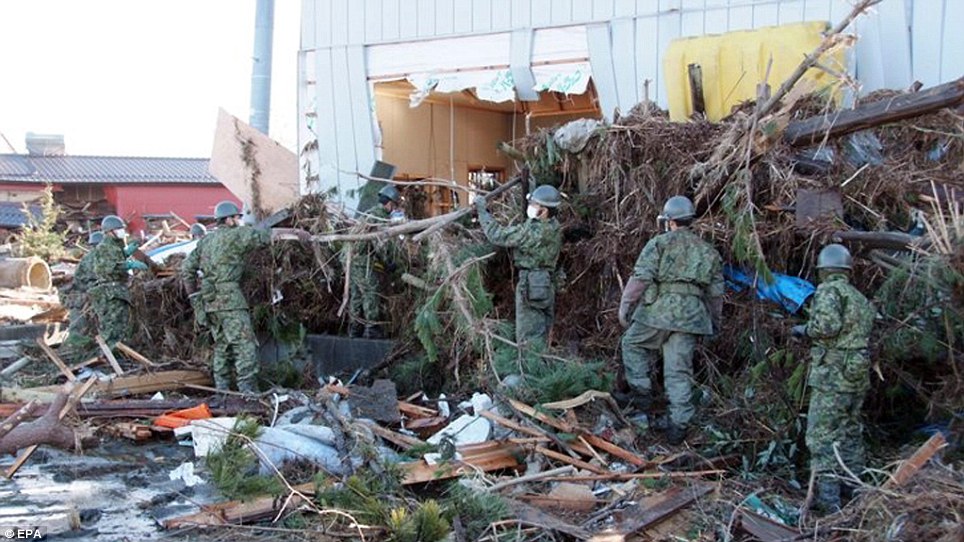
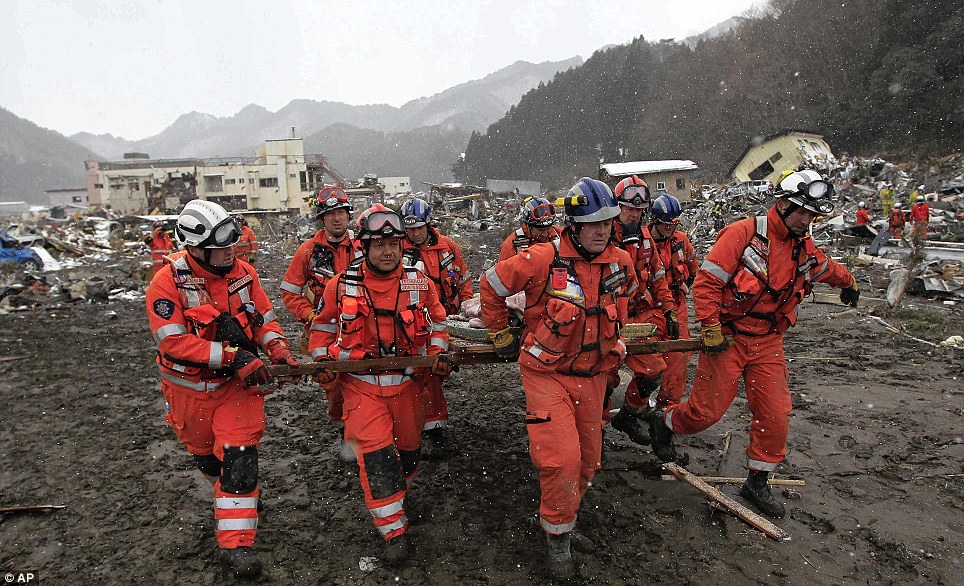
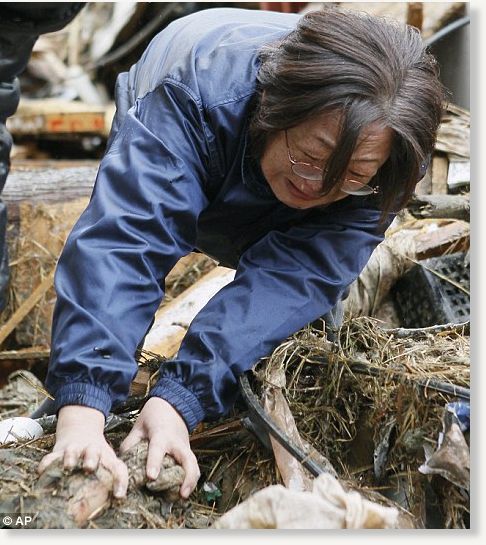
The misery of the Japanese people is being compounded by a lack of assurances about the possibility of nuclear meltdown.
Yuhei Sato, the governor of Fukushima prefecture, told the NHK television network: 'The anxiety and anger being felt by people in Fukushima have reached a boiling point.'
He said evacuation preparations were inadequate, saying centres lacked enough hot meals and basic necessities.
The chief of the UN nuclear agency, Yukiya Amano, said he would go to Japan to assess what he called a 'very serious' situation and urged Tokyo to provide better information to his organisation.
The escalating humanitarian aspect of the double disaster continues to produce heartbreaking stories.
One of the most impacting images to emerge was of a woman breaking down as found her dead mother's hand among the rubble of her destroyed home.
Yoshie Murakami cried in anguish as she said her final goodbyes and held her mother's hand.
The body was discovered after five days of agonising searching in in the tsunami-hit city of Rikuzentakata.
Terribly, her 23-year-old daughter is still missing. All Mrs Murakami can do is pray for a miracle.
Similar scenes unfolded throughout the country as rescuers sifted though the rubble and families prayed that their loved ones were safe and well.
Some residents made homeless by the tragedy foraged for food, crying out with delight when they found an undamaged can of food here, a still-edible packet of noodles there.
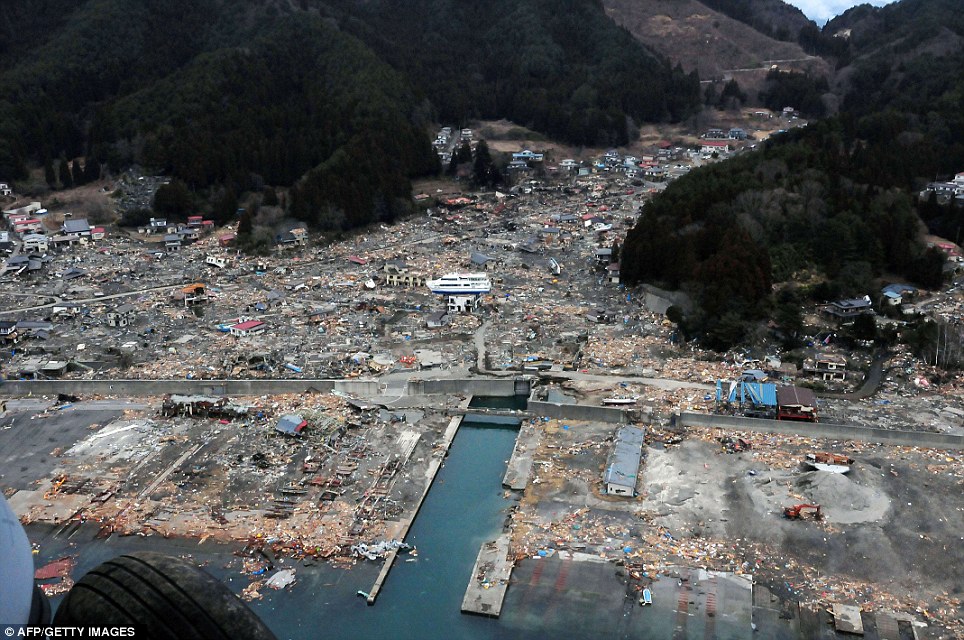
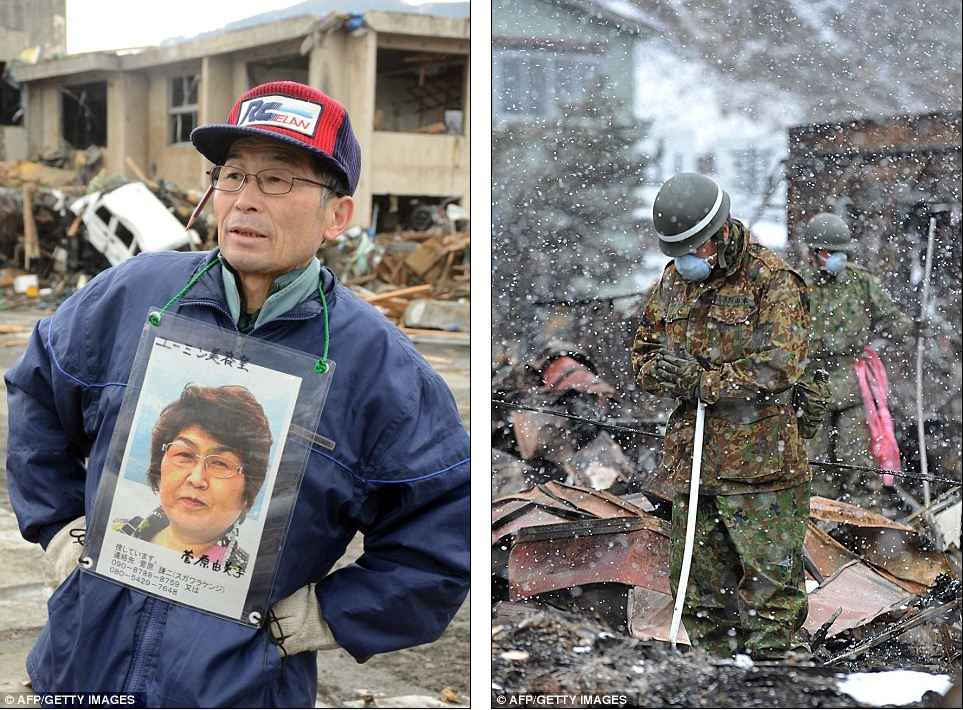
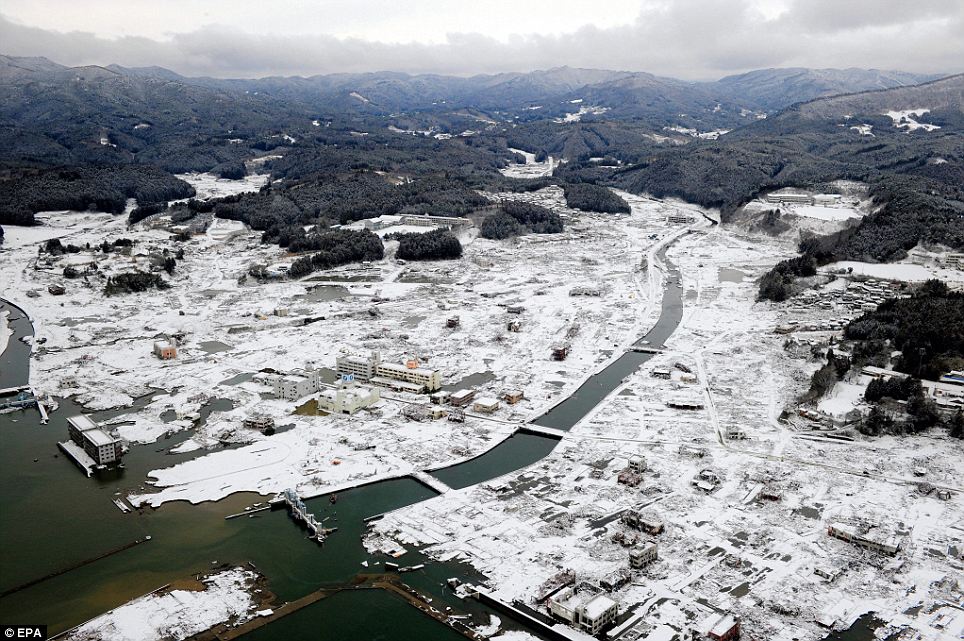
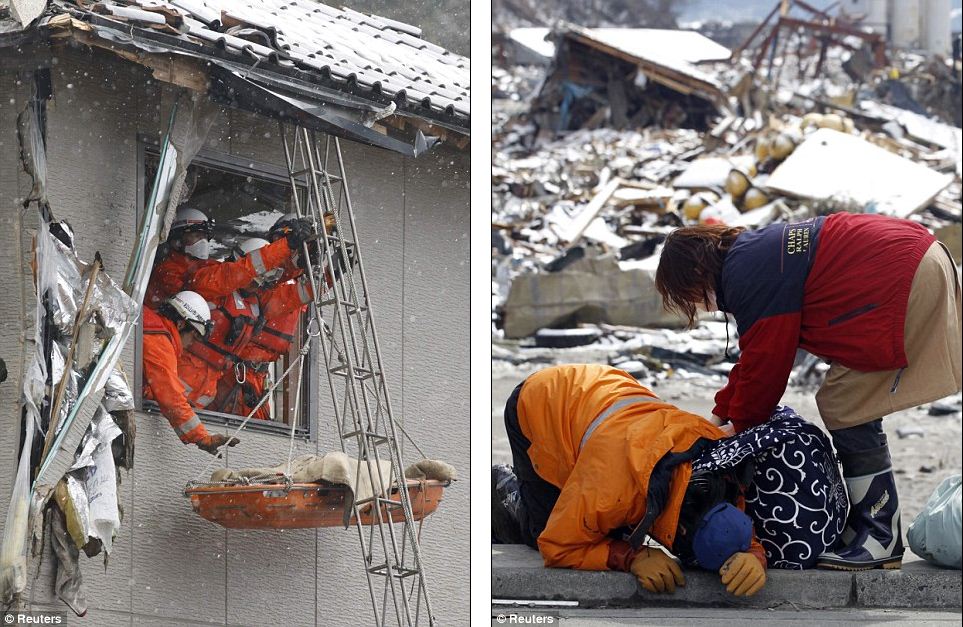
Some need medicine, more clothing, food, fuel - but most of all they want the nightmare to go away.
Some 450,000 people are housed in camps across the north of the country. Another 850,000 households are struggling without food and water.
More than 110 countries have offered aid but vital medicines are in short supply.
In the town of Koriyama, 30 miles from the Fukushima nuclear plant, 9,000 refugees are sheltering out of range - they hope - of radioactivity.
'We need food, fuel, water,' the mayor, Masao Haro, told the Mail.
'Everyone is freezing. We ask for help. If anyone is hearing us, please help in whatever way you can.'
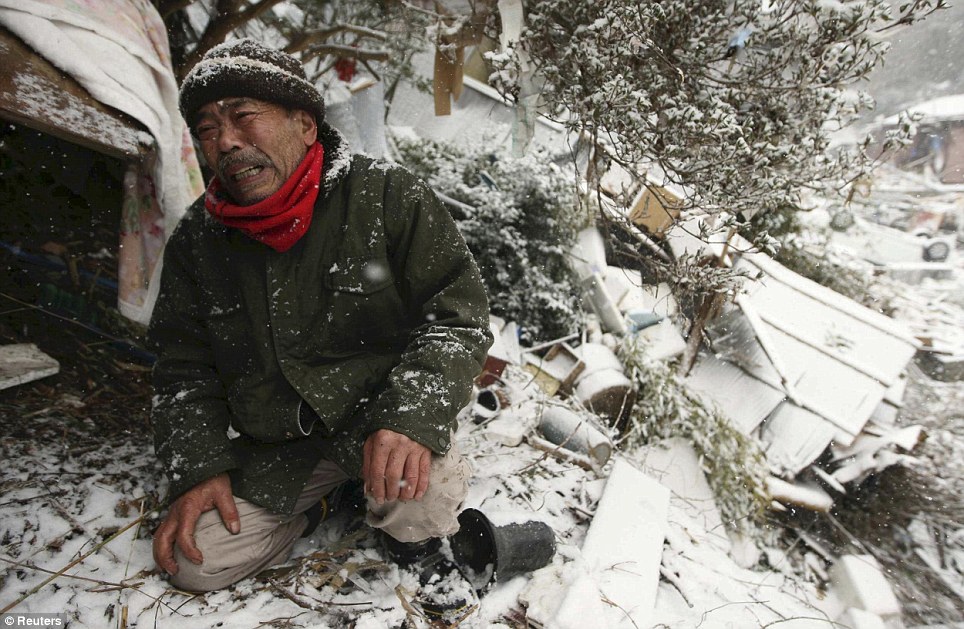
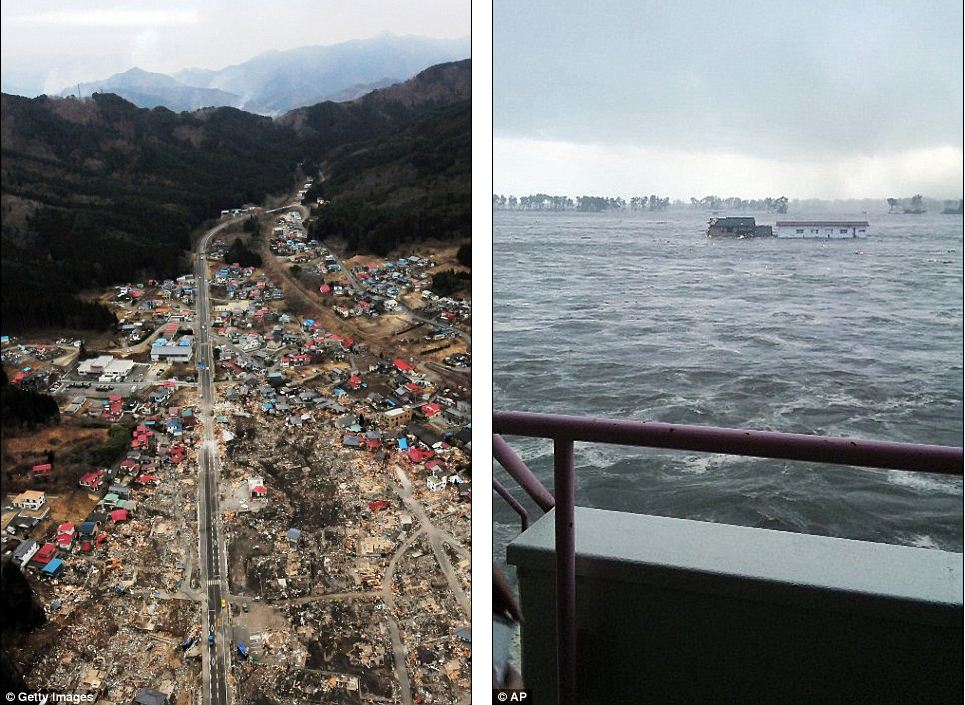
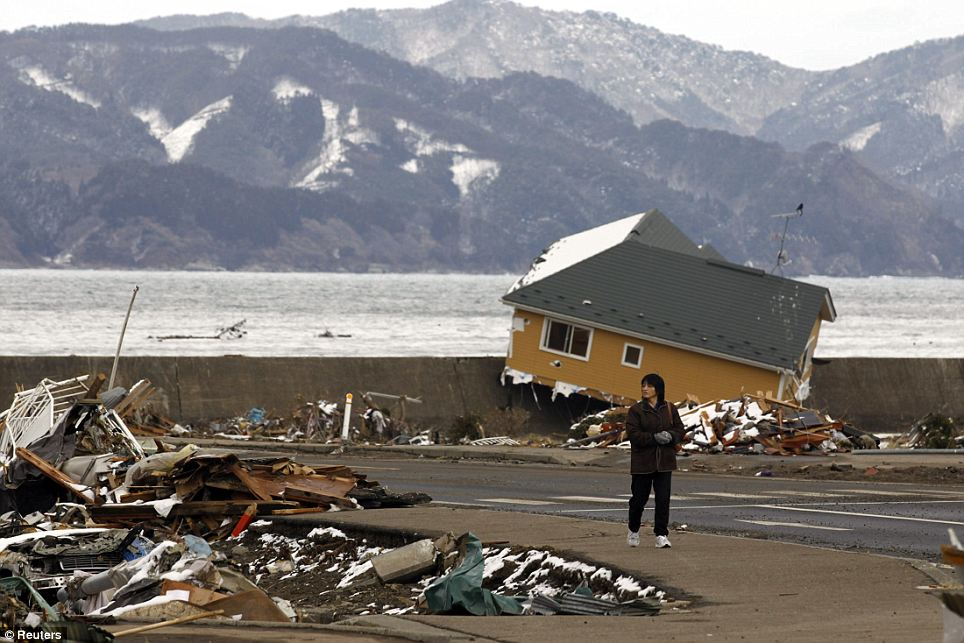



Reader Comments
to our Newsletter